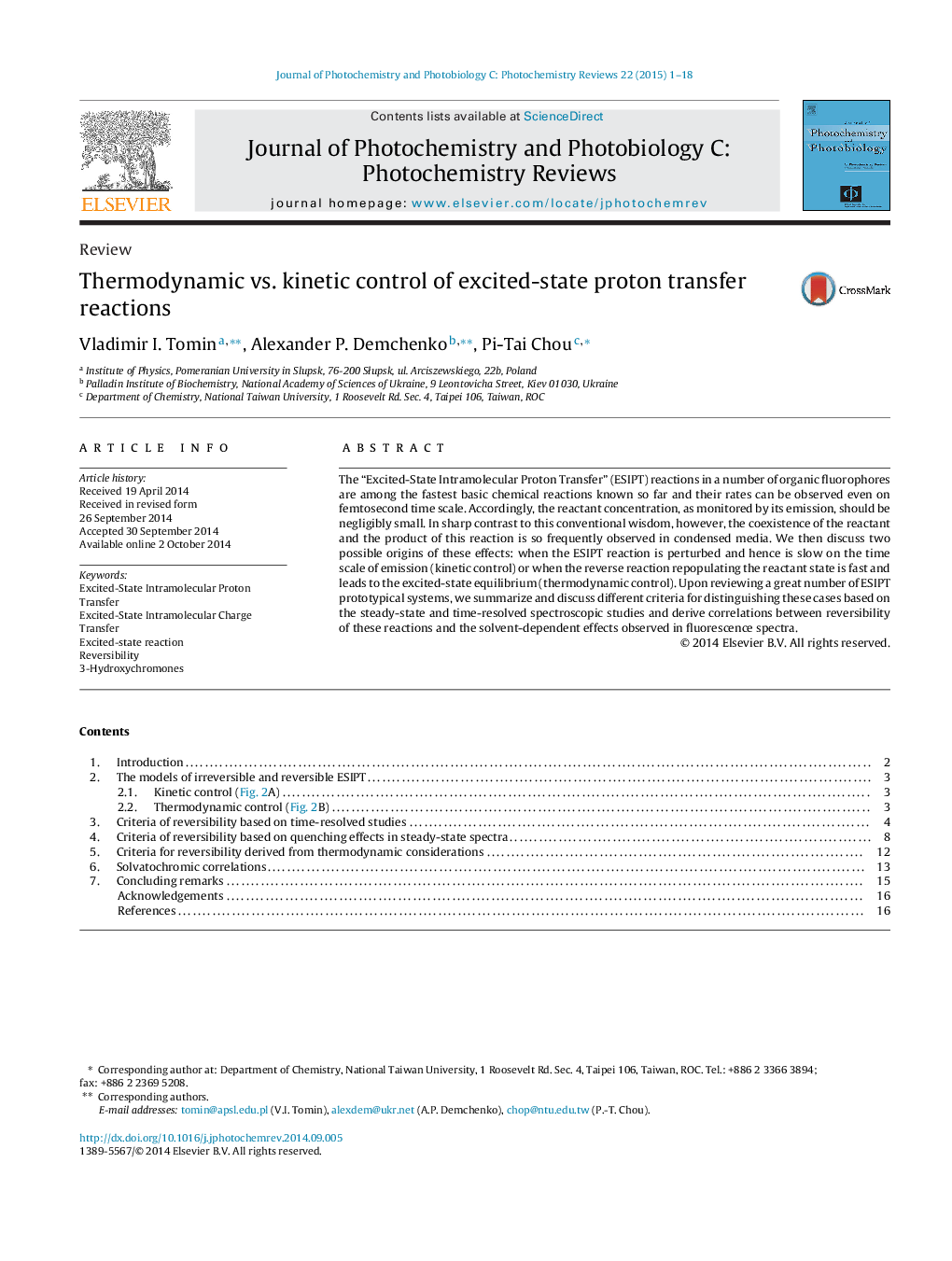| کد مقاله | کد نشریه | سال انتشار | مقاله انگلیسی | نسخه تمام متن |
|---|---|---|---|---|
| 31300 | 44736 | 2015 | 18 صفحه PDF | دانلود رایگان |
• The excited-state proton transfer reactions follow either thermodynamic or kinetic control.
• These two basicmechanisms are switchable by chemical modification or environment perturbation.
• Distinguishing these mechanisms is made by time-resolved, steady-state and solvatochromic data.
The “Excited-State Intramolecular Proton Transfer” (ESIPT) reactions in a number of organic fluorophores are among the fastest basic chemical reactions known so far and their rates can be observed even on femtosecond time scale. Accordingly, the reactant concentration, as monitored by its emission, should be negligibly small. In sharp contrast to this conventional wisdom, however, the coexistence of the reactant and the product of this reaction is so frequently observed in condensed media. We then discuss two possible origins of these effects: when the ESIPT reaction is perturbed and hence is slow on the time scale of emission (kinetic control) or when the reverse reaction repopulating the reactant state is fast and leads to the excited-state equilibrium (thermodynamic control). Upon reviewing a great number of ESIPT prototypical systems, we summarize and discuss different criteria for distinguishing these cases based on the steady-state and time-resolved spectroscopic studies and derive correlations between reversibility of these reactions and the solvent-dependent effects observed in fluorescence spectra.
Figure optionsDownload as PowerPoint slide
Journal: Journal of Photochemistry and Photobiology C: Photochemistry Reviews - Volume 22, March 2015, Pages 1–18
